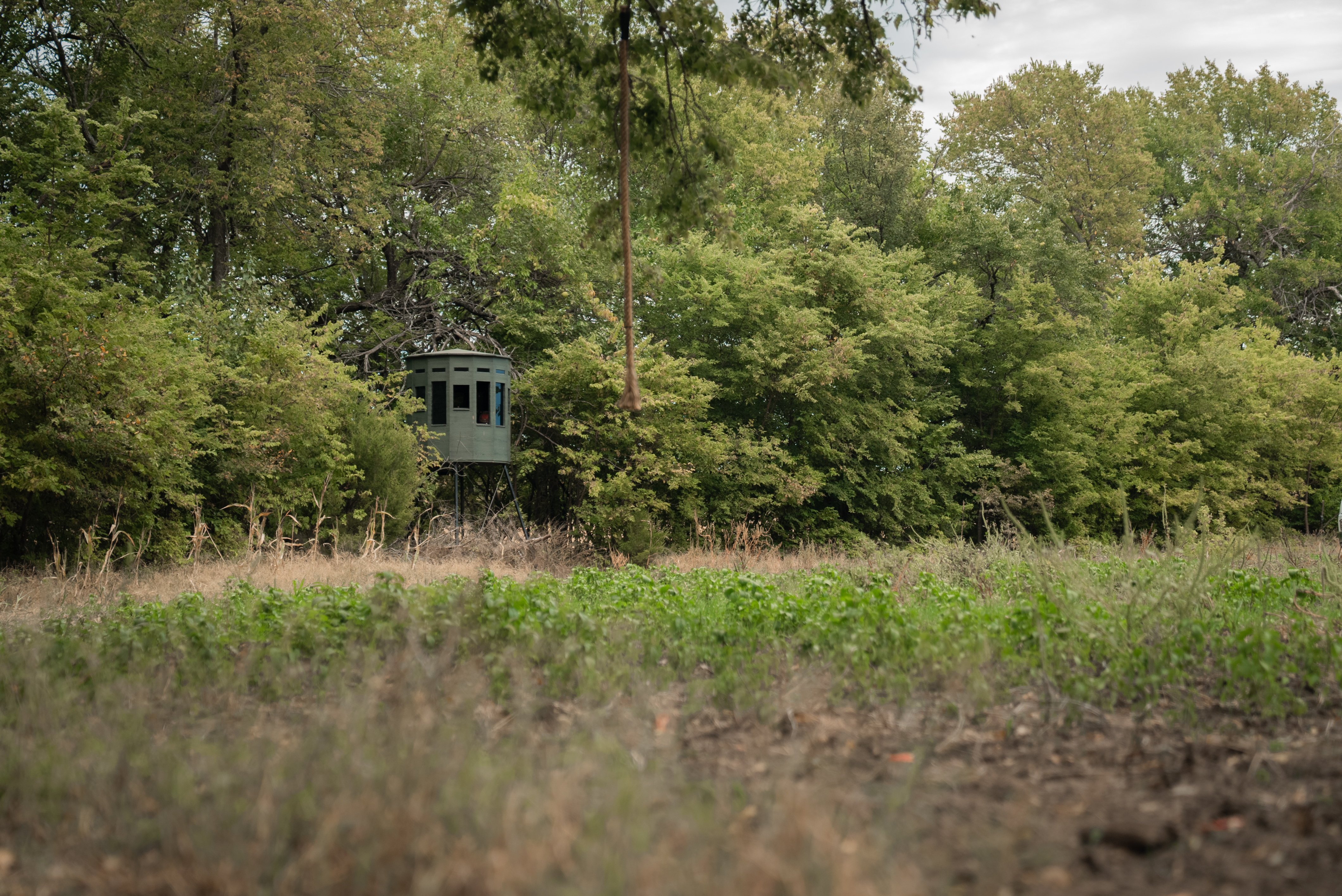
Like treestand and ground blind locations, trail cameras are only as good as the spots you put them. Placing them in unproductive areas generally leads to less and subpar photos that won’t produce the results you are looking for. Here’s what to do instead:
Studying Apps and Maps
Begin by learning as much about a property as possible. Determine what the tract of land has to offer. Fortunately, there are ways to do this. The classical way was to study various physical maps, such as aerial, topo, hydro, and other maps. These revealed specific clues as to what a given area had to offer, where given hotspots might be located, and these are still great tools.
However, the digital age has brought us maps in much smaller, more powerful tools—apps. Studying apps is an excellent way to achieve the same results or even better ones. Apps often have layers that are better than traditional maps. For example, hybrid layers show aerial views and topo lines simultaneously. Furthermore, new 3D layers show land in a way that app and map viewers have never been able to view before. It’s truly the next best thing to being on the property.
Reflecting on Past Seasons
Aside from apps and maps, if you’ve spent previous seasons on the land, looking back on history is another method for determining where to place trail cameras. Things can change from year to year, but things can also remain the same. Unless the environment or conditions change, the likelihood of the deer herd altering its overall property habits isn’t likely.
Walking the Property
Those who don’t have history with the property should walk it, no matter the time of year. One trip to the woods to learn what it has to offer is much more beneficial than not scouting it for the sake of reducing pressure. Most deer tolerate a little bit of human intrusion - just don’t make it a habit.
All said, here are just a handful of spots that are oftentimes a hunting property’s best trail camera locations:
1. Pinch points
Pinch point is a very loose term. Many things can serve as one. Funnels, fence gaps, saddles, tree lines, and more can be one. Positioning cameras in such places is especially good for those who can’t place bait or minerals in front of cams.
2. Benches
Those who hunt hill country understand just how much deer use a good bench. This is especially true if the bench is located along the top third of the ridge.

3. Ridge Lines
The tops of ridges are also good. Deer travel along these when getting from point A to B, especially during the rut. Just as these areas serve as good stand locations, they are also good spots for cameras.
4. Leeward Ridges
Best defined as the downwind side of a ridge, leeward ridges commonly serve as bedding areas. Deer use these areas due to the winding advantages they provide.
5. Inside Field Corners
When deer enter the open, they seem to prefer inside field corners where two perpendicular tree lines meet. This makes such areas good for cameras.
6. Staging Areas
While it’s generally best to avoid placing trail cameras in bedding areas — unless you leave them there untouched all season long — staging areas are great for cams. Every staging area looks slightly different, but these are best defined as areas of thick, early successional habitat between bedding areas and food sources.
7. Edge Habitat
Deer are commonly referred to as edge animals because they spend so much time in and around edge habitat. Generally, these places are where two habitat types meet, such as hardwoods and conifers, hardwoods and grasslands, etc.
8. Food Sources
Likely the safest and least intrusive places to put trail cameras are major food sources that aren’t extremely close to bedding areas. These areas are visited by deer, but mostly under cover of darkness. Still, it’s good for taking inventory and piecing together patterns.

9. Micro Plots
Smaller man-made food sources are good for cams, too. These are generally closer to bedding areas, and often serve as staging areas. These are great places to get daytime photos of deer.
10. Water Sources
Deer need water just as much as they need food. If water is scarce, or at least concentrated, consider placing cams over these areas.
Chances are, you can throw a camera on almost any tree on a property and luck into a few pictures of deer here and there. However, if you really want to get the most out of your camera scouting, placing the cameras in the very best spots will get you the most pictures so you can get the most out of your scouting.
Article by Josh Honeycutt



